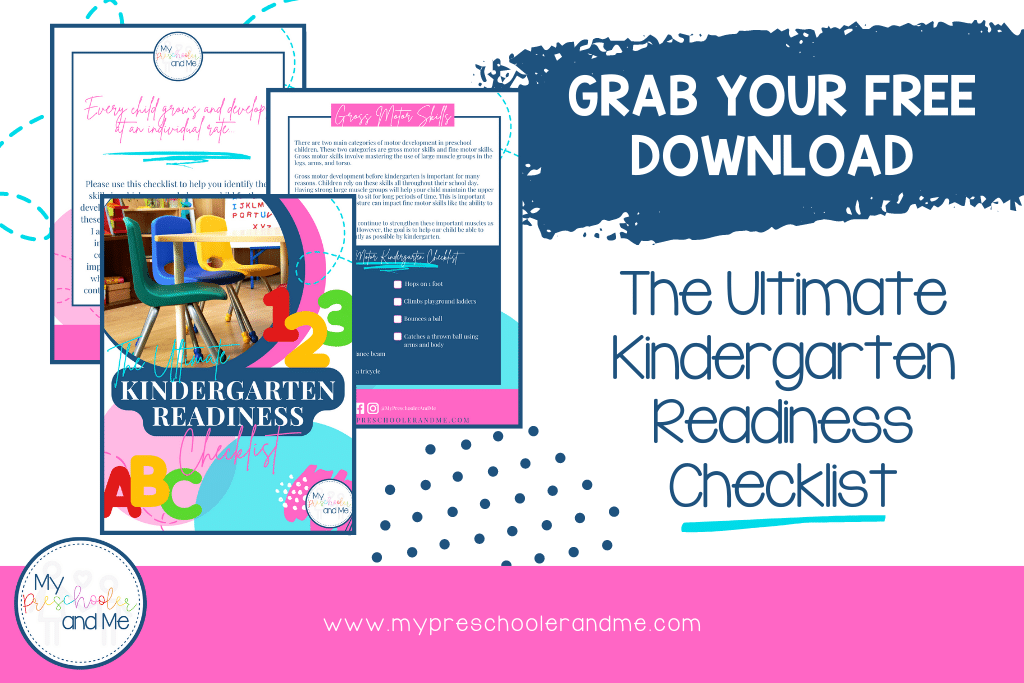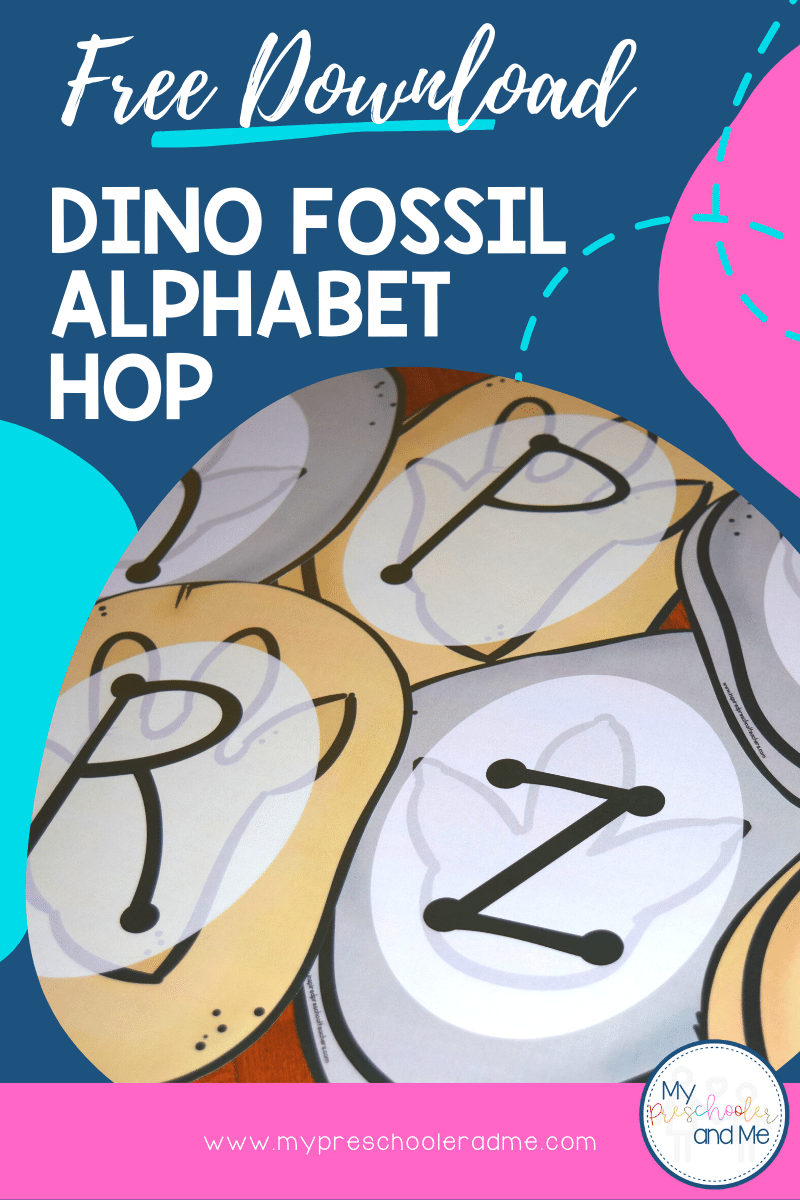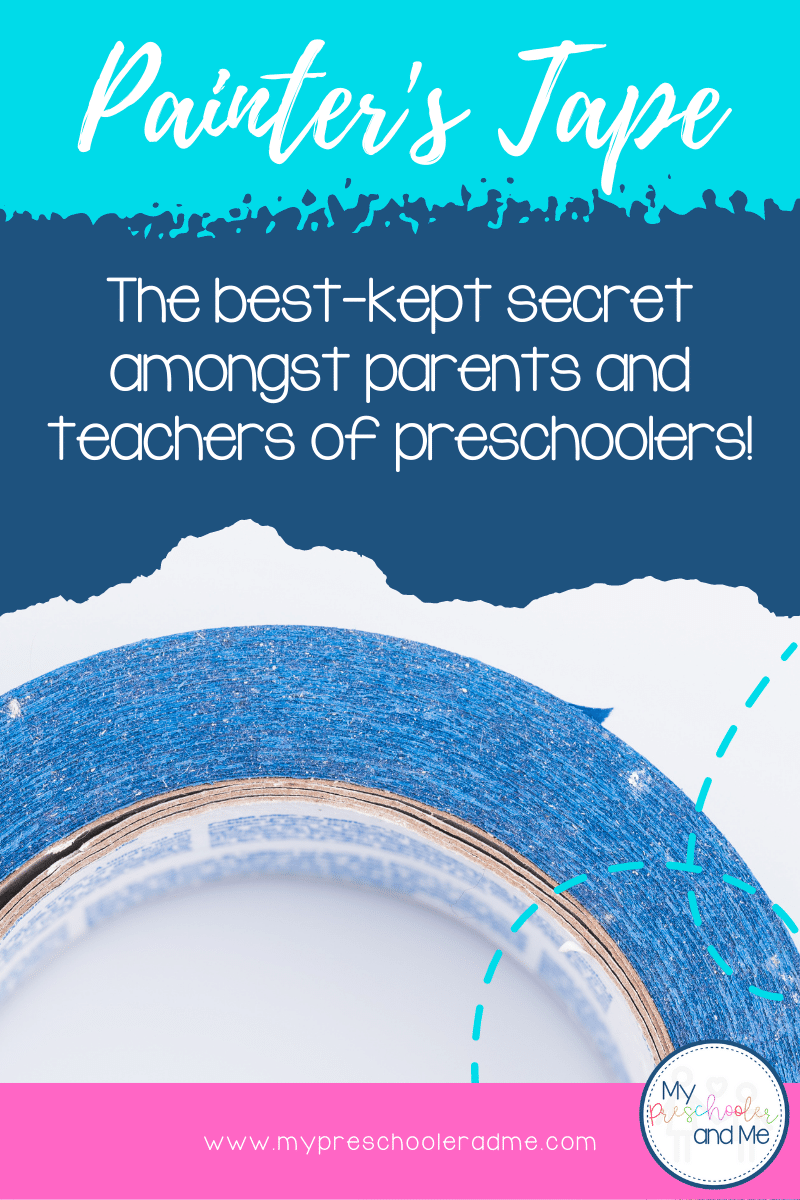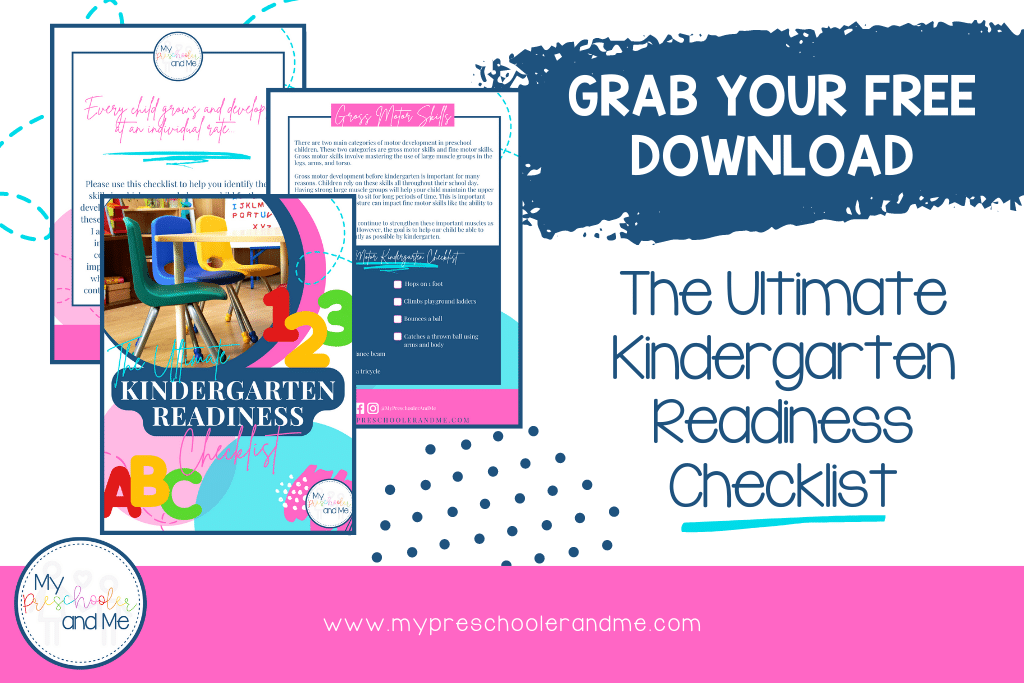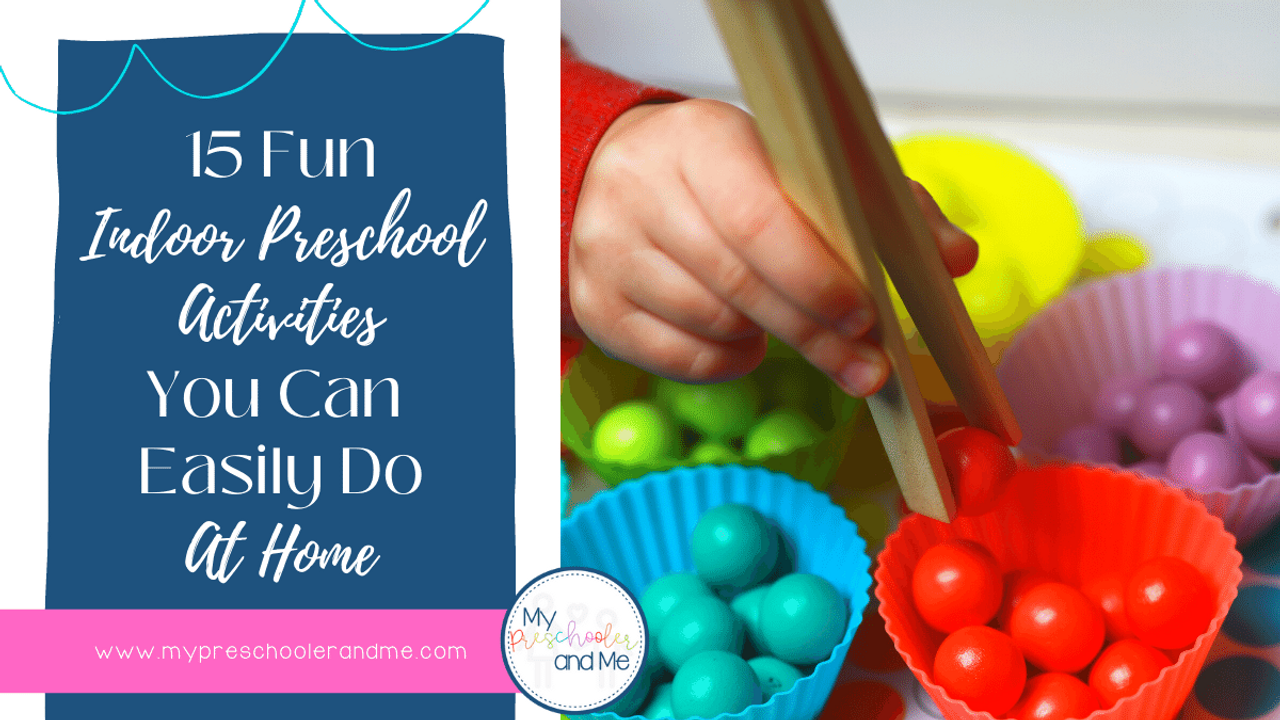
15 Fun Indoor Preschool Activities You Can Easily Do At Home
On days when you are stuck inside, it can be hard to think of indoor preschool activities to keep your child entertained. That’s why we’ve created a list of 15 fun indoor preschool activities just for you and your preschooler.
All of these indoor preschool activities can be prepared using simple supplies from around your house. Why spend hours preparing complicated activities when you can jump right into the fun?!
Want to know the best part? These activities won’t just keep your preschool busy. All of the indoor preschool activities on our list were picked specifically because each addresses an important kindergarten readiness skills.
Speaking of kindergarten readiness, is your preschooler fully prepared? Grab a free copy of our Ultimate Kindergarten Readiness Checklist here. Eliminate the stress of kindergarten prep with our handy checklist.
Fine Motor Indoor Preschool Activities
Fine motor skills involve the use of smaller muscle groups within your child’s body. Preschoolers use fine motor skills for any movement that requires precision and accuracy (cutting, stringing beads, peeling stickers, etc.).
Over time, these fine muscle movements will become more refined. Provide your child with plenty of practice to help with this process. The following activities are perfect indoor preschool activities to help strengthen those important small muscles.
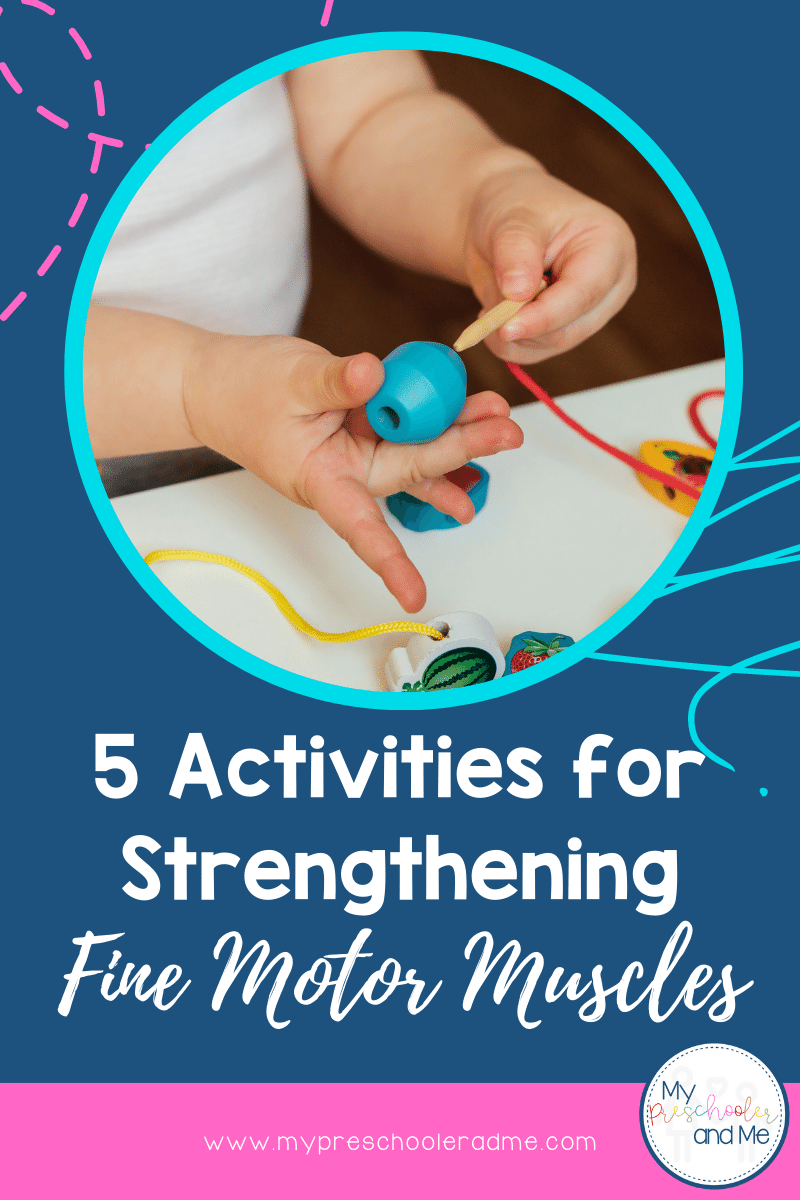
Crazy Spaghetti
This activity is perfect for helping your child improve hand-eye coordination as well as fine motor skills. It’s easy to set up and can provide lots of fun and learning.
You will need a box of raw spaghetti, Play-doh, and small beads. If you don’t have small beads, you can cut a straw into small pieces that resemble beads. You could also use pasta like Rigatoni or Penne. Just make sure whatever you choose can be slid onto the spaghetti noodles.
Here’s how to set up this activity:
- Press a Play-Doh ball down onto a hard surface.
- Stick 5 or 6 pieces of spaghetti into the Play-Doh. Make sure the spaghetti is standing upright.
- Have your child practice sliding the beads (pasta, and/or straw pieces) down the spaghetti noodles. Practice making patterns and counting as you play.
Cutting Bins
Preschoolers love to cut different materials. Cutting bins give your child the freedom to explore and practice cutting without worrying about “messing up.”
Cutting can be intimidating for preschoolers since it requires children to complete a lot of different movements at once. The more practice you provide now, the better prepared for kindergarten your child will become.
Here’s how to set up this activity:
- Gather a shallow plastic container for holding the cutting materials.
- Fill the container with different materials like wrapping paper, regular paper, aluminum foil, foam, paper towels, cardstock, construction paper, etc.
- Before giving the scissors to your child, review the cutting rules–Only cut what’s inside the bin. Use your scissors safely. Have fun!
- Provide your preschooler with safety scissors. Tell your child to practice cutting the different materials in the container.

DIY Tweezers
Tweezers are one of the best ways to encourage fine motor development because preschoolers love using them! Tweezers can be used to practice picking up and placing colored pom poms, small beads, and other small objects into a jar or basket.
Here is a great set of fine motor practice items that can be purchased from Amazon. If you’d like a more affordable option, sometimes you can find child-friendly tweezers at Dollar Tree in the teaching section.
To create your own pair of tweezers at home, follow these directions:
- Gather your supplies. You will need a clothespin, two large popsicle sticks, and craft glue. A glue gun will also work but please be careful if your preschooler is going to be helping.
- Lay one of the large popsicle sticks flat on the table. Glue the clothespin on top. The end of the clothespin that opens when squeezed should be about 1/2" away from one end of the stick. (See the photo below for visual directions).
- Glue the second stick on top of the clothespin with both ends even with the popsicle stick underneath.
- Once your tweezers have completely dried, have your preschooler practice picking up small objects like pom poms, pasta, beads, or anything else you have around your house.
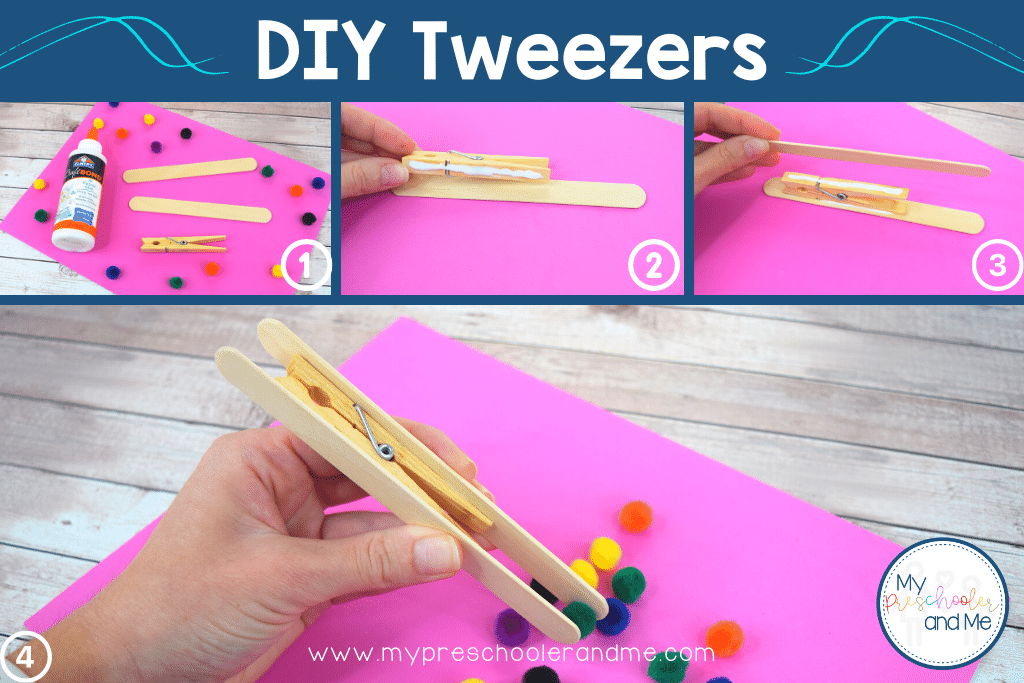
Homemade Play Dough
One of the best activities for strengthening fine motor muscles in preschool children is playing with Play-Doh. Smashing, squishing, and rolling Play-Doh helps strengthen tiny hand muscles.
Here is what you need to make your homemade dough.
½ cup salt
1 cup water
2 tablespoon oil
1 tablespoon cream of tartar
1 cup flour
- Place all the ingredients in a saucepan and cook over medium heat, stirring constantly.
- Once the dough begins pulling away from the sides of the saucepan and starts forming a ball while being stirred, remove it from the heat
- Let the dough cool. Knead well.
- Store in an airtight container.
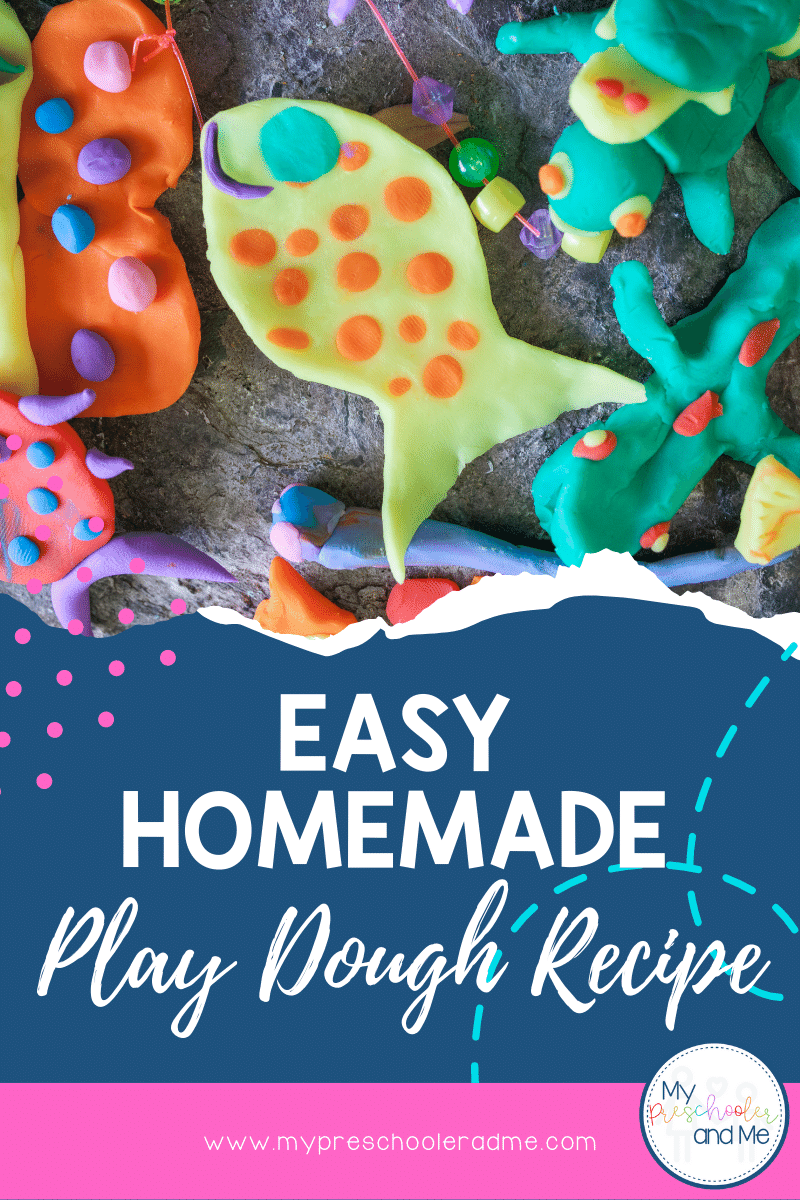
If you’d like to learn more about the benefits of using Play-Doh with preschoolers, check out Ms. Jamie’s blog post called Play-Doh in the Preschool Classroom.
Sticker Lines
Stickers are always a big hit with preschoolers! Children love the challenge of peeling stickers off the page. The use of stickers is a wonderful way to help your child’s fine motor muscles get stronger.
For this activity, you will need white paper, a black marker, and stickers.
- Use the black marker to draw various types of lines. Draw straight lines, zigzag lines, curvy lines, and shapes.
- Give your child a sheet of stickers. Have your child cover each line with stickers from one end to another.
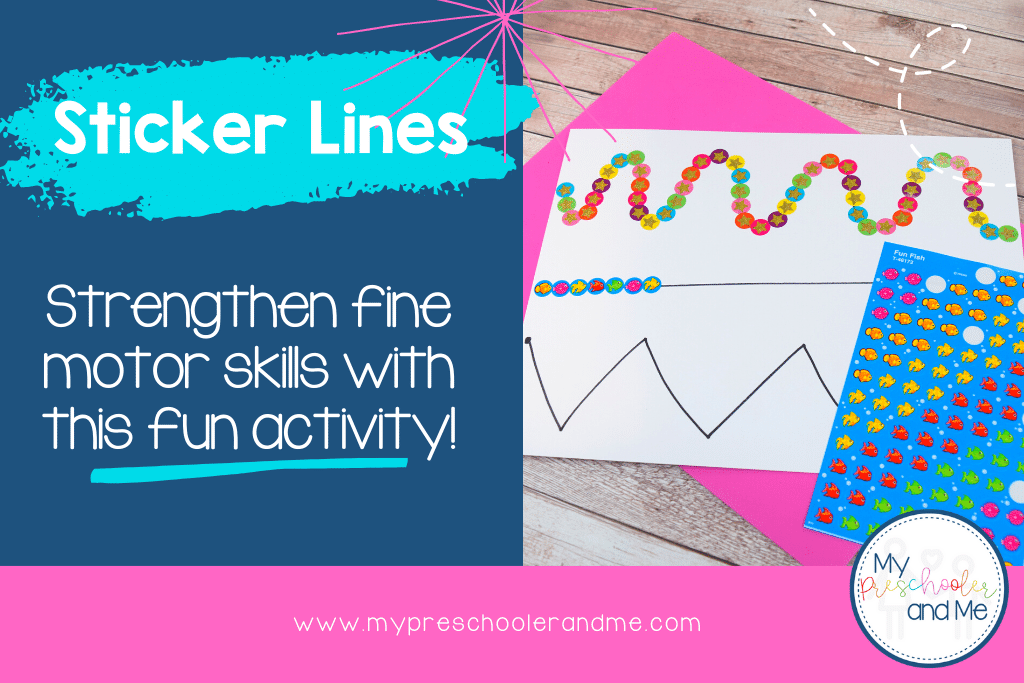
Indoor Preschool Gross Motor Activities
Gross motor skills involve the use of larger muscle groups in your child’s body. Your child relies on his/her gross motor skills to do things like running or jumping. Just like the smaller muscle groups, children need practice to strengthen these muscles.
These large muscle groups are important for kindergarten because they will help your child sit upright in his or her chair for longer periods of time. Here are 5 activities you can do at home to help strengthen your preschooler's gross motor activities.
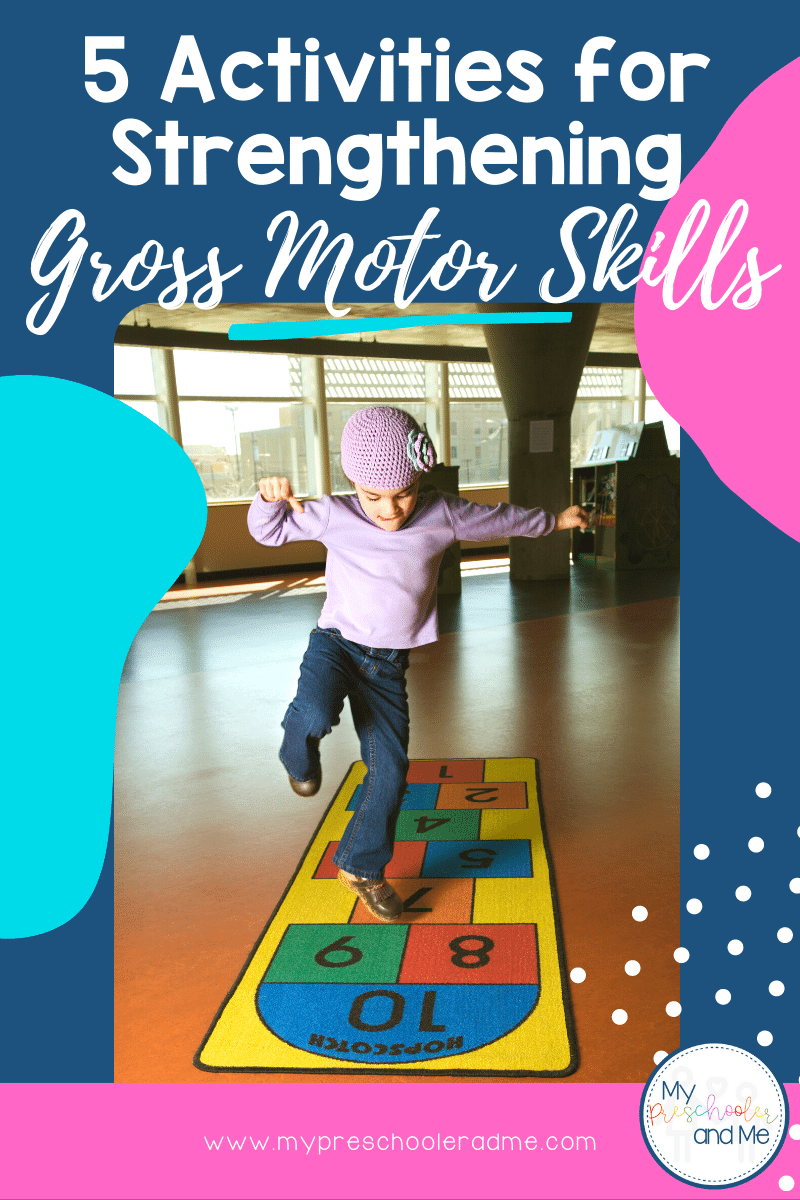
Dino Alphabet Hop
This activity will help your preschooler burn some energy while learning in the process. You can play this game in a variety of ways to accommodate your child’s learning needs. If your child already knows the letters of the alphabet, you can play the game using shapes, colors, numbers, or even simple addition equations.
Here is how you prepare this activity:
- Download and print a free copy of the Dino Fossil Alphabet Hop Cards. To save on ink, you can select specific letters to print or use paper plates instead. Write one letter of the alphabet in the center of each plate.
- Tape the letter cards around the room. Leave the cards close enough that your child can hop from card to card.
- To play the game, have your child identify the letter on each fossil card before hopping onto it.
Balloon Bump Shape Challenge
Balloons are fun, inexpensive toys that can entertain preschoolers for hours. Playing with balloons is a great way to keep preschoolers moving. For this activity, you will need 5 balloons, string, a Sharpie marker, and Painter’s Tape.
Here’s how to prepare this activity:
- Blow up 5 balloons.
- Draw one large shape on the bottom of each balloon: circle, square, triangle, star, and rectangle.
- Tie a string to the end of each balloon. Make the strings long enough for your child to be able to jump and hit the balloons when taped to the ceiling or door frame.
- Use painter’s tape and attach each balloon’s string to the ceiling or a door frame.
- Once the balloons are hung from the ceiling, call out a shape. Have your preschooler hit the balloon with that shape drawn on it. If your child already knows the shapes, you can write numbers or letters on the balloons and have your child practice identifying each.
Egg on a Spoon Race
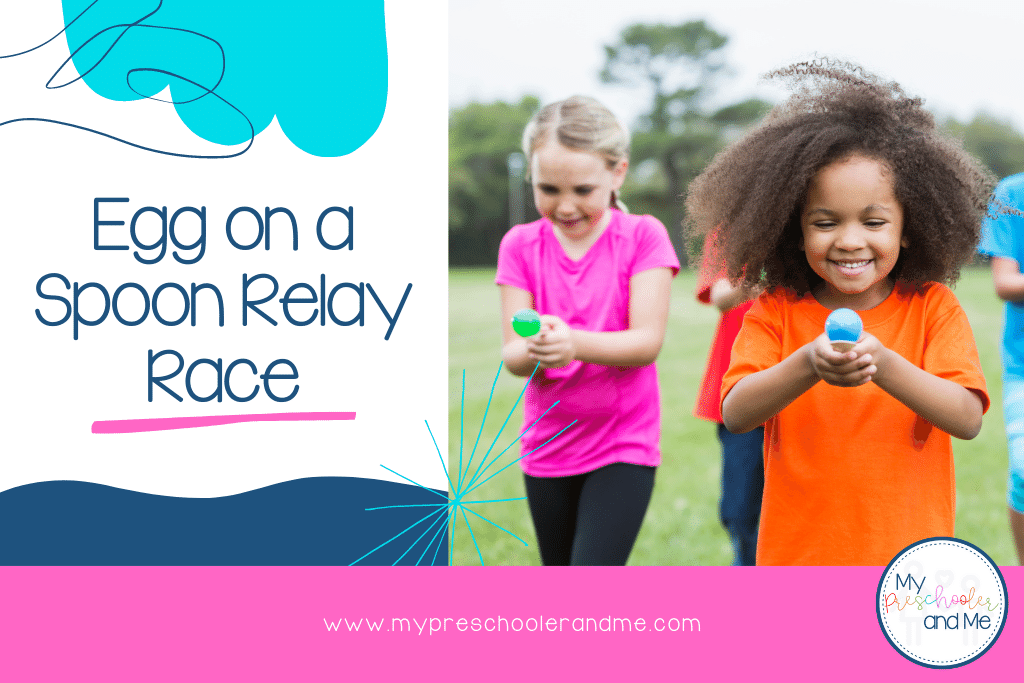
Learning to balance an egg on a spoon while walking is great for building gross motor skills and developing concentration skills. You will need a wooden spoon, several plastic eggs or real hardboiled eggs, and a bucket. Here is a cute set from Amazon if you are interested.
To play this game:
- Mark off the distance you want your child to carry the egg on the spoon.
- Place the bucket at the opposite end of where you are starting your walk.
- Place an egg on the spoon. Have your child slowly carry the egg to the bucket. If your child drops the egg, pick it up and return to the starting line to try again.
- Once your child reaches the bucket, drop the egg in, and then skip back to the starting line.
- Repeat
You can add music to this activity to make it even more exciting!
Indoor Learning Obstacle Course
Preschoolers love to do activities that deviate from their daily routines. Setting up an indoor obstacle course is the perfect way to tap into your child’s excitement. Here’s how to sneak in some learning amongst the fun.
To begin:
- Decide what obstacle(s) your child is going to complete. Use couches, cushions, chairs, tables, pillows, etc. to create your course.
- Focus on one skill you want your child to practice. If your child doesn’t know the letters of the alphabet, we recommend starting here. Write a few letters on flashcards.
- Lay those letter cards randomly throughout the obstacle course. Each time your child gets to a flashcard, have him or her identify that letter.
Pro Tip: Practice letter names, letter sounds, rhyming words, identifying numbers, or even completing simple addition facts. The possibilities for learning are endless with this activity.
Painter’s Tape Balance Beams
For this activity, your child will be practicing balancing skills using painter’s tape. Painter’s Tape is great to have around the house because it offers so many learning opportunities while also being gentle on carpet, flooring, walls, and ceilings.
All you need for this activity is a roll of painter’s tape.
- Create a couple “balance beam” tape strips for your preschooler to practice walking across. Make zig-zag, curvy, straight, and swirly lines all over the floor. Be sure to make the designs large enough for your child to walk on.
- Have your preschooler practice walking the lines while trying to stay balanced.
For more indoor preschool gross motor activities, here are 19 more ideas from The Measured Mom’s blog.
Indoor Water Play Activities for Preschoolers
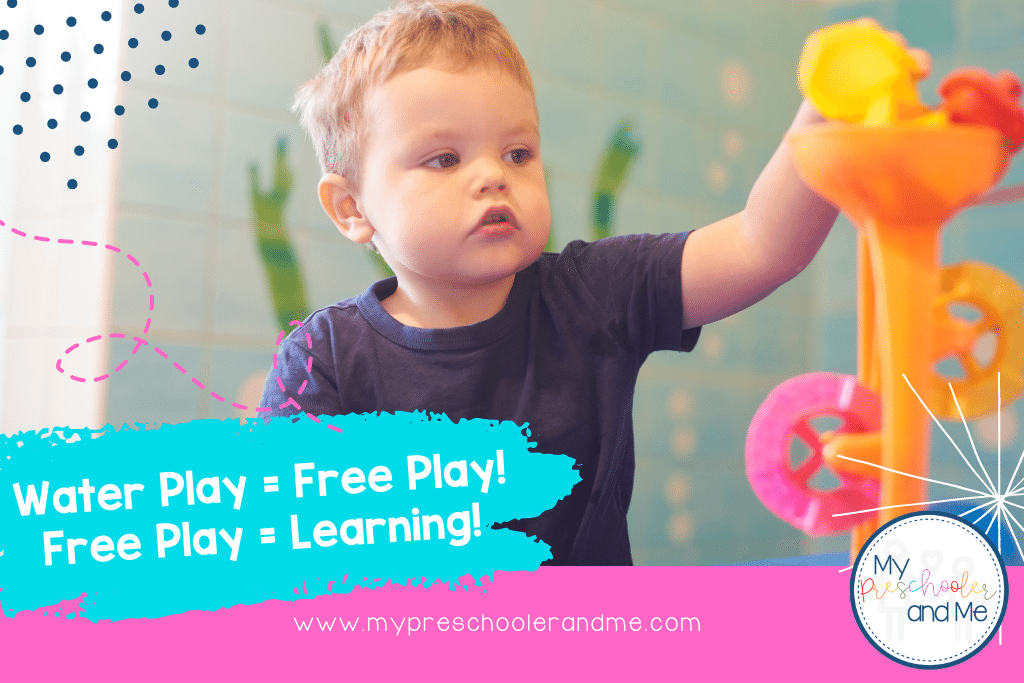
Water play is any play that involves water. Children enjoy using buckets, cups, measuring spoons, and other items to practice dumping, pouring, and even spraying. Water play offers preschoolers the freedom to explore and learn independently.
If you’d like to learn more about the benefits of water play for preschoolers, check out Busy Bee’s blog post, The Benefits of Water Play for Child Development.
Drops on a Penny
Have you ever wondered how many water droplets fit on top of a penny? This activity offers counting practice, fine motor practice, and hand-eye coordination.
It’s super simple to set up. All you need is an eye dropper, a cup of water, and a penny.
Once you have your supplies ready, here’s how to complete the activity:
- Show your child how to use an eye dropper. Practice for a minute until they get the hang of it.
- Place a penny on a table.
- Ask your child to put one drop at a time on the penny. Count as you add drops.
- Keep going until the water flows off the penny. How many drops of water fit on your penny?
- Practice using larger coins like quarters or nickels. Talk about which coin held the most water. Why might this be the case?
Floating Pictures
This activity is sure to bring a smile to your child’s face. You will need an Expo marker, a glass bowl, and water.
- Start by drawing small pictures on the bottom of the glass dish. You could write letters, numbers, or even draw shapes.
- Slowly pour water into the dish.
What happens to the pictures on the bottom? How cool is that!
Paper Towel Drawings
This might be one of the easiest activities to do with your child. All you need are paper towels, a pack of markers, and an eye dropper. If you completed the Drops on a Penny Activity above, you can use the same eye dropper again.
Here’s how you complete this activity:
- Lay a paper towel flat on the table.
- Color all over the paper towel with markers.
- When you are finished coloring, use the eye dropper to drip water all over the paper towel. Less is more. What happened to the colors?
This activity can also be done with coffee filters. Just be sure to use a small amount of water or the colors will bleed too much.
Pom Pom Ice Bucket
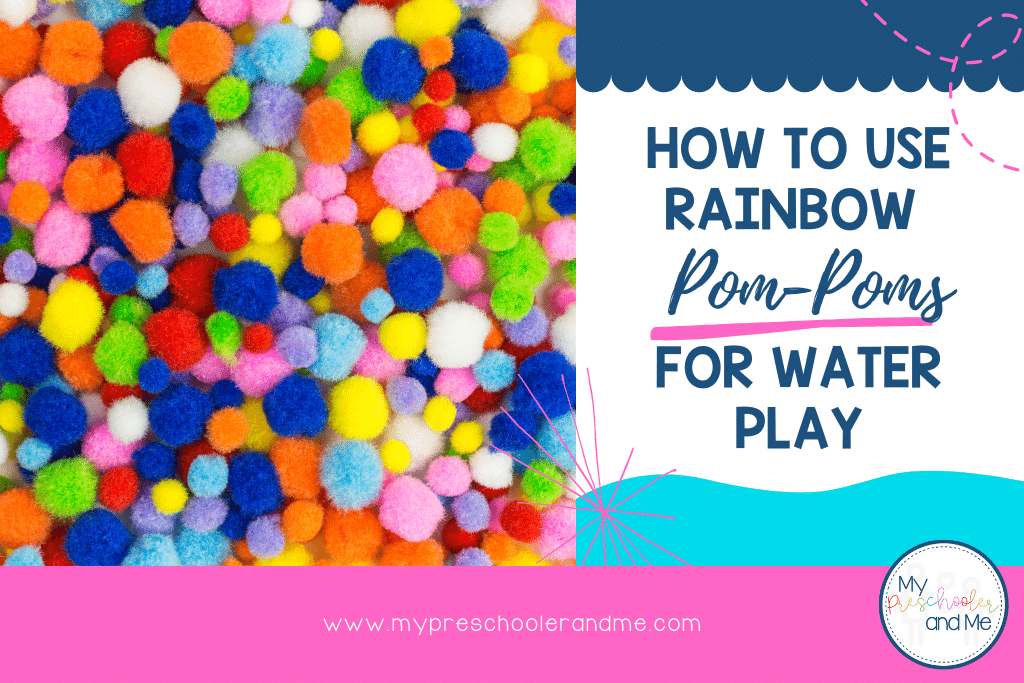
Rainbow pom poms can be used in so many ways with preschoolers. They never get old to children. This activity is very simple to prepare.
Here’s what you need to do:
- Use an ice cube tray to freeze rainbow pom poms inside ice cubes.
- Fill a shallow, flat container with water.
- Drop the pom pom ice cubes into the water.
- As the cubes melt, have your child place the pom poms into various piles, sorting by color. Add a set of tweezers to give your child even more fine motor practice.
Water Bead Science
Has your child ever played with water beads? If not, he or she is in for a treat! This activity is sure to get your little one thinking like a scientist in no time.
If you don’t have water beads at home, check out these water beads on Amazon for lots of size and color options. There are so many different things you can do with water beads.
Beth over at 123 Homeschool and Me has shared some fun science experiments you can do. Be sure to check out her post for more ideas.
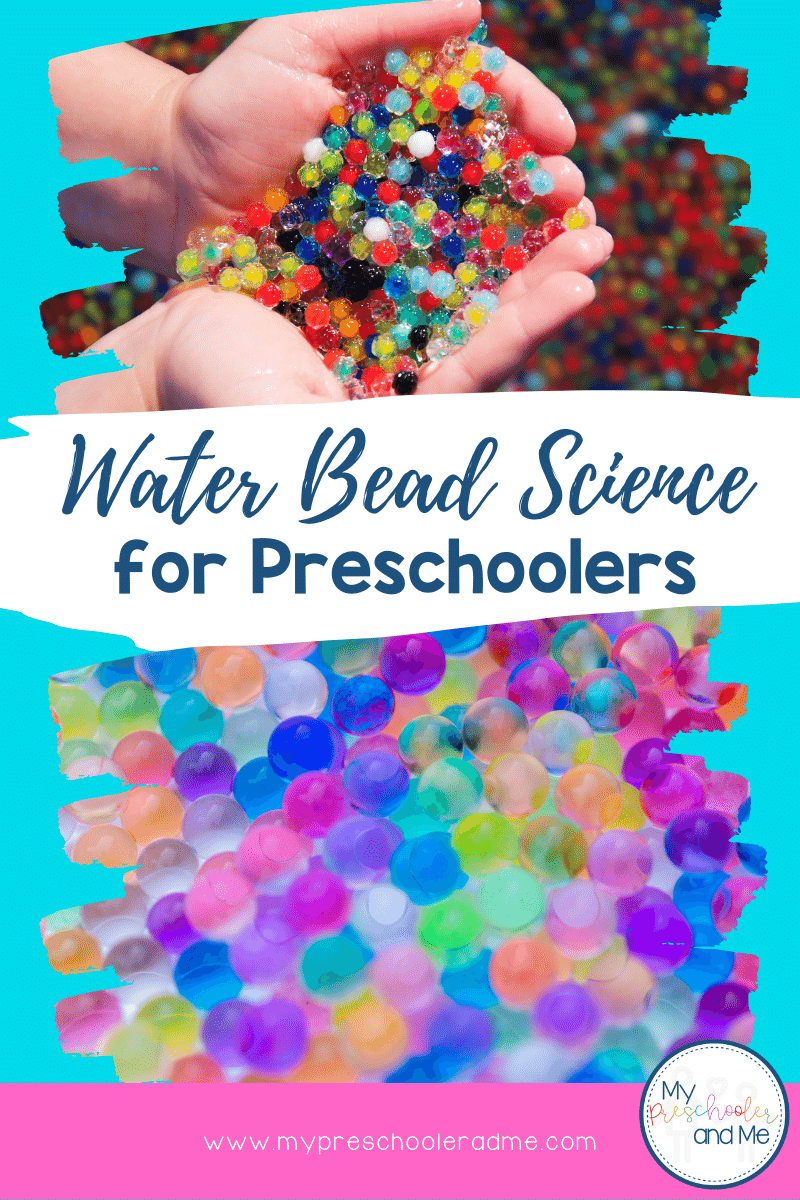
We hope you find this list of ideas helpful. Be sure to let us know below which activity was your child’s favorite. You can also tag us on Facebook or Instagram @MyPreschoolerAndMe.
Before you go, are you curious what skills your preschooler needs to know for kindergarten? Be sure to grab a copy of our free checklist: The Ultimate Kindergarten Checklist.
Happy Teaching!
